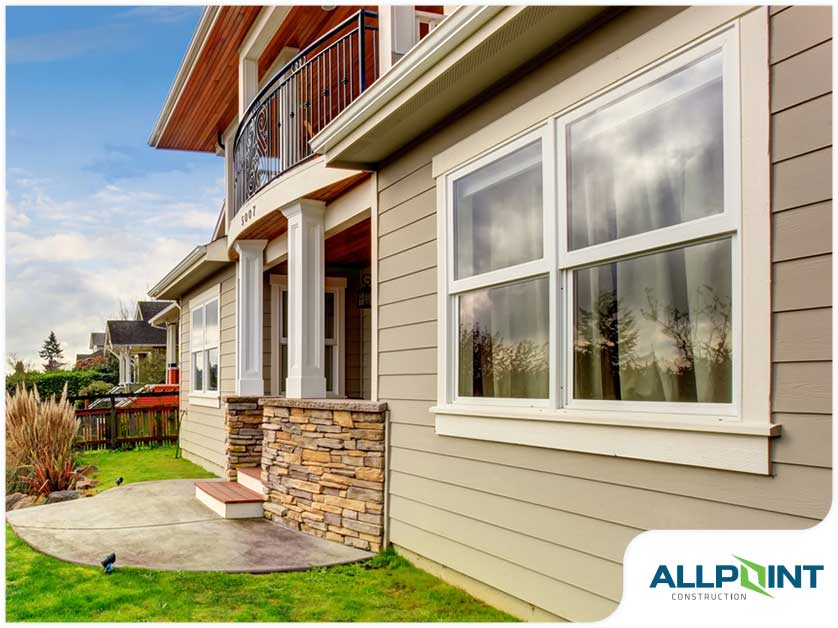An ounce of prevention is worth a pound of cure.” – Benjamin Franklin
Have you ever thought about what a strong Michigan storm could do to your home? And worried about shattered glass, broken doors, or water seeping into your living space?
The truth is that Michigan’s unpredictable weather brings heavy snow, strong winds, and intense storms that can cause significant damage. If your home isn’t protected, you might face costly repairs and safety risks.
Want to know the best way to safeguard your home? Storm-resistant windows and doors are the ultimate solution. Let’s explore why they are an absolute must-have for Michigan homeowners.
Provide Protection Against High Winds and Flying Debris
Michigan storms can bring powerful winds that turn everyday objects into dangerous projectiles. A tree branch, a loose sign, or even small debris can shatter regular windows and doors.
These windows are designed with a shatterproof interlayer, meaning even if an impact is strong enough to crack the outer glass. The interior layer of these windows holds them together, preventing dangerous shards from flying into your home. This safety feature is invaluable, especially in areas where tornadoes and high winds are common.
For example, if a strong gust of wind picks up a rock and slams it into your window, wouldn’t you rather have a window designed to handle that impact? So, storm-resistant windows in Michigan are the best choice.
Prevention of Costly Water Damage
Do you have any idea how much damage a single leaky pipe can do? The same goes for broken windows and leaky doors. Water finds a way in and creates mold, rotten wood, and serious structural damage. It’s a special concern to those with breathing problems. However, there is a way out: storm-resistant windows and doors. Storm-proof windows and doors form an air-tight seal, repelling moisture and protecting your well-being and house. They have advanced seal technology that resists letting in water.
Enhanced Home Security Even on Clear Days
Storm-proof windows and doors do more than keep the bad weather out; they also protect your home. Their impact-resistant, tough glass is hard for burglars to break. Unlike fragile windows that break under little pressure, these are still standing even under intense pressure. These windows are good for those areas where thieves are common. Because burglars search for vulnerable areas, so do not make their work any simpler. Installing these secure windows and doors prevents your family and belongings from getting into harm’s way throughout the year.
Improved Energy Efficiency and Lower Utility Bills
Do you struggle with high heating bills in winter or cooling costs in summer? Michigan’s cold winters and humid summers make it hard to keep your home comfortable. But storm-resistant windows and doors can help. Their multi-layered glass keeps heat inside during winter and cool air in during summer. This means your HVAC system doesn’t have to work as hard. It also saves you money on energy bills each month.
These windows and doors do more than control temperature. They also reduce outside noise. If you live near a busy street or a loud neighborhood, they help keep your home quiet. A more peaceful and comfortable living space is just another great reason to make the switch.
Increased Home Value and Insurance Savings
Looking for an easy way to boost your home’s value? Storm-resistant windows and doors secure your home, making it more energy-efficient and more desirable to buyers. Insurance companies even give discounts to homes with such upgrades. This means you benefit now and later.
Homebuyers love homes that are well-sheltered from extreme weather. Storm-resistant elements make your home more attractive when it comes time to sell. And because these windows and doors minimize storm damage risks, insurance providers tend to reduce premiums. That translates to long-term cost savings and additional financial rewards for homeowners.
Final Thoughts: Don’t Wait Until It’s Too Late
Now you know how crucial storm-resistant doors and windows are. So, what are you waiting for? Give your home an upgrade before a disaster happens. Getting storm-resistant windows in Michigan means more peace of mind, reduced repair expenses, and a secure house for you and your family. Act now, and ensure your home is built to withstand whatever nature throws its way.
